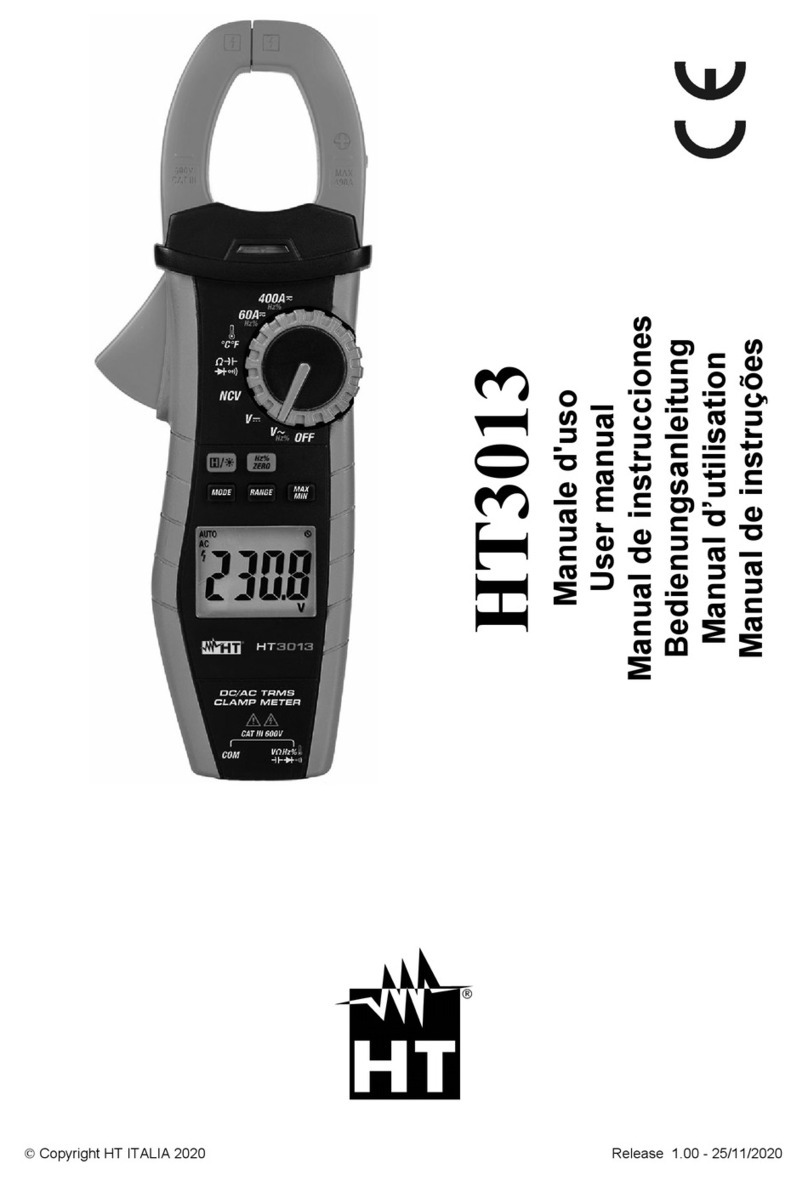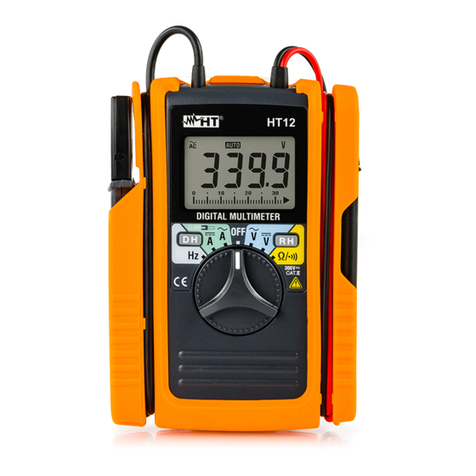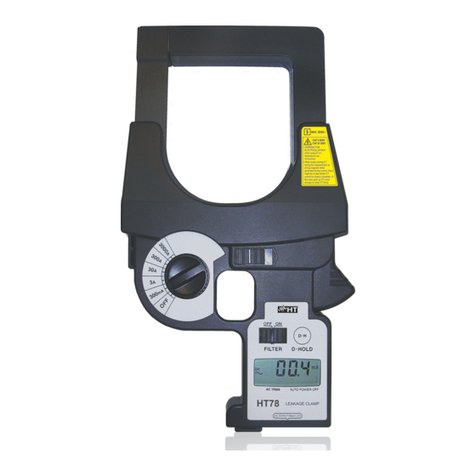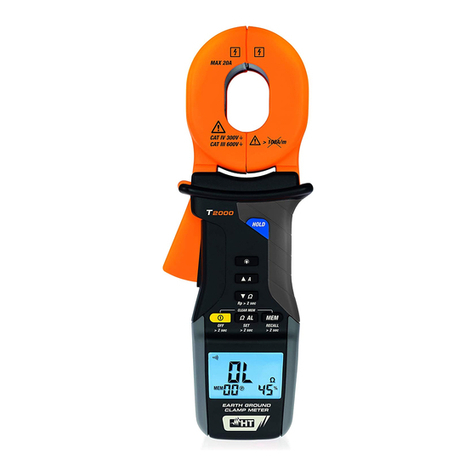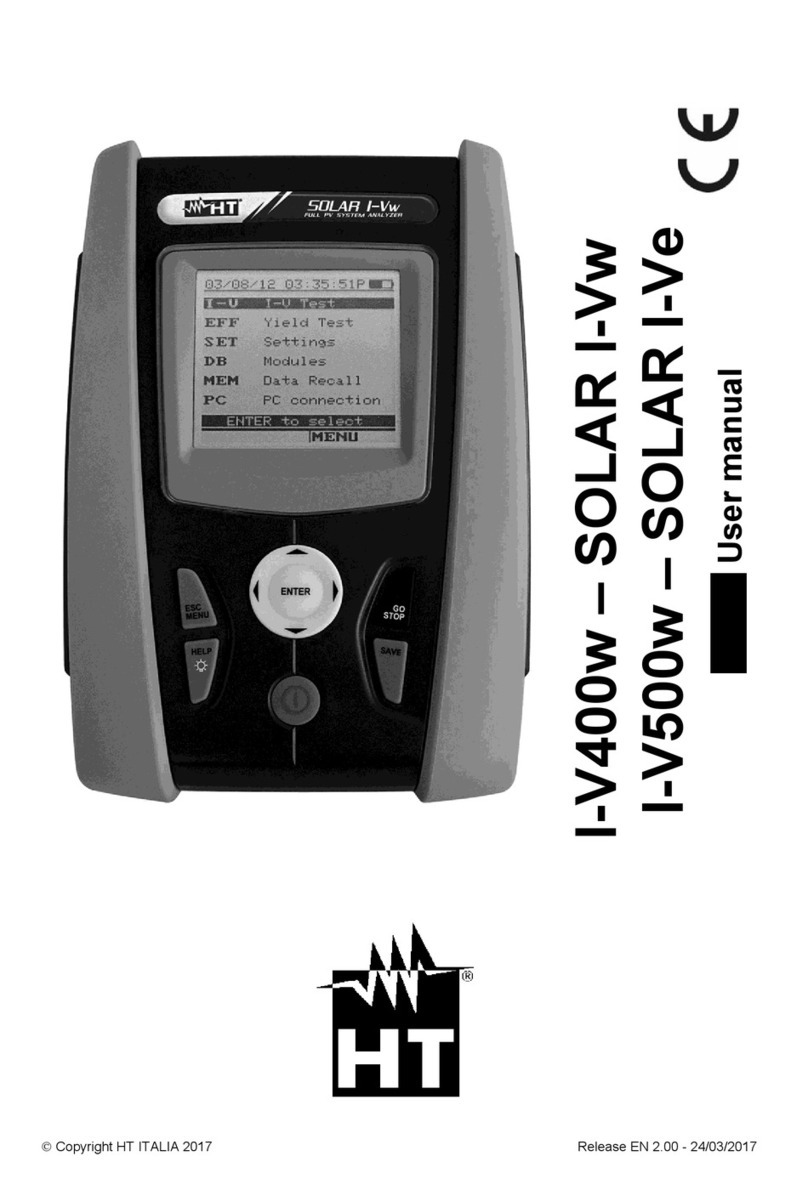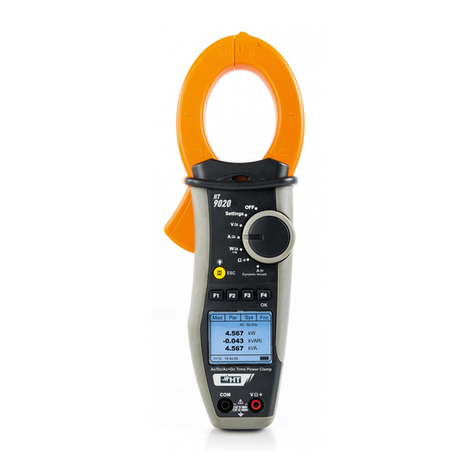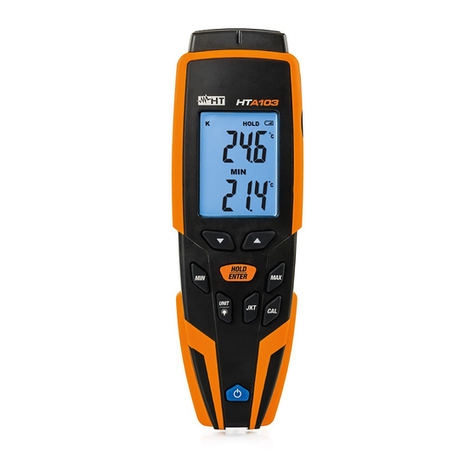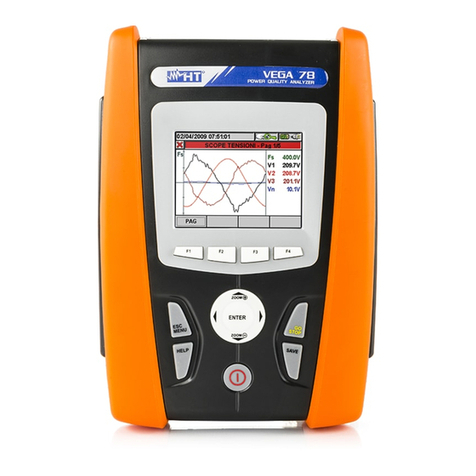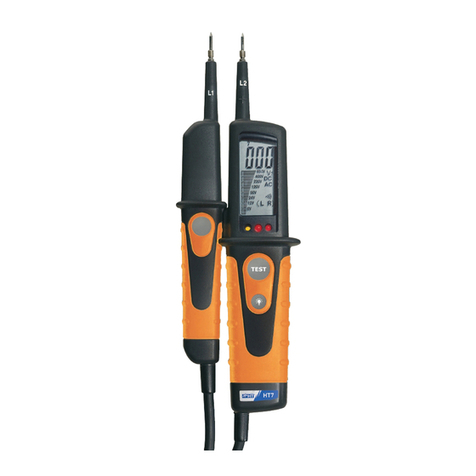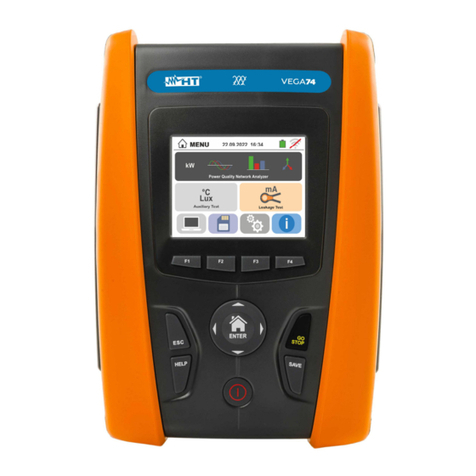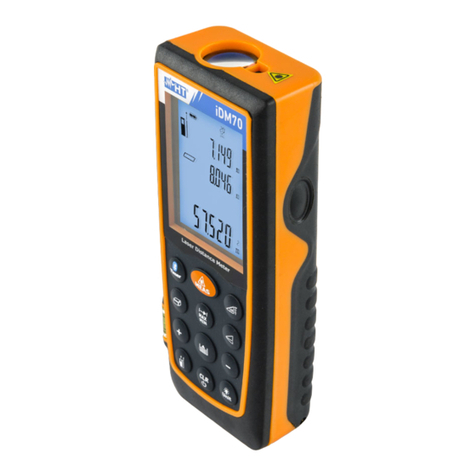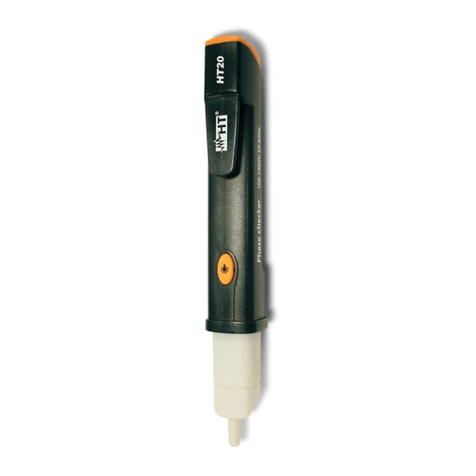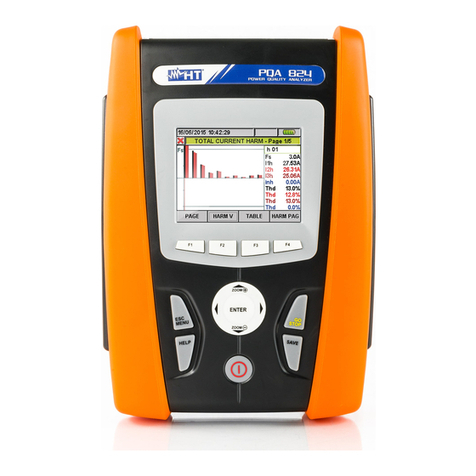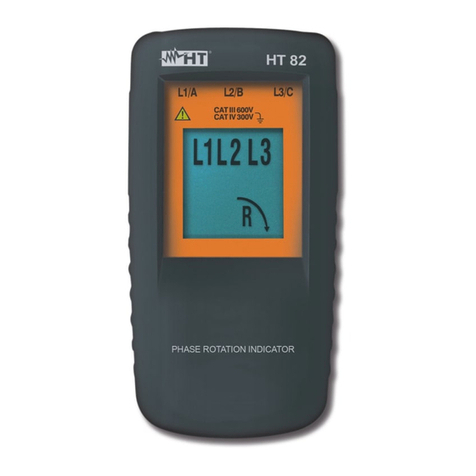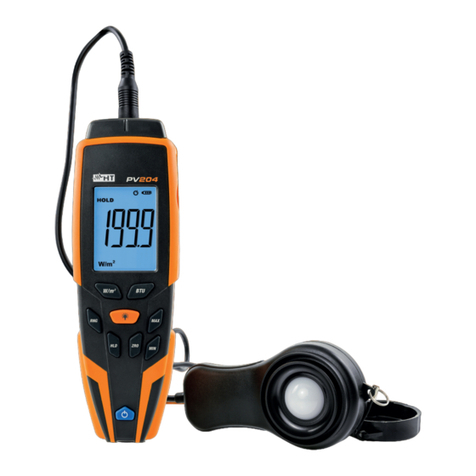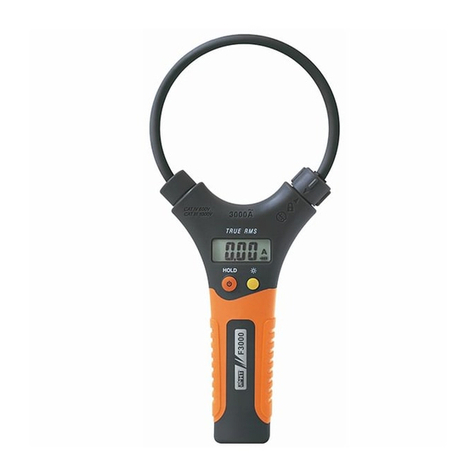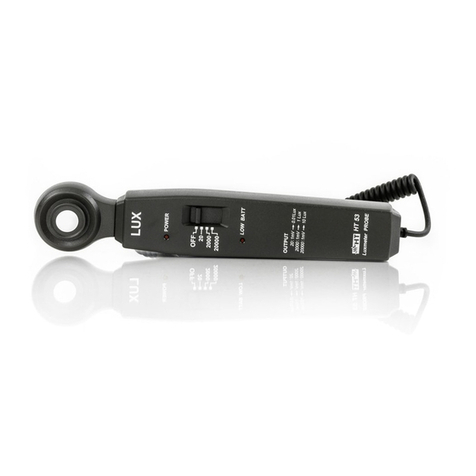
HT4011
EN – 1
Table of contents:
1.PRECAUTIONS AND SAFETY MEASURES...............................................................2
1.1.Preliminary instructions..................................................................................................... 2
1.2.During use......................................................................................................................... 3
1.3.After use............................................................................................................................ 3
1.4.Definition of measurement (overvoltage) category............................................................ 3
2.GENERAL DESCRIPTION...........................................................................................4
2.1.Measuring average values and TRMS values................................................................... 4
2.2.Definition of true root mean square value and crest factor................................................ 4
3.PREPARATION FOR USE...........................................................................................5
3.1.Initial checks...................................................................................................................... 5
3.2.Instrument power supply................................................................................................... 5
3.3.Calibration......................................................................................................................... 5
3.4.Storage.............................................................................................................................. 5
4.OPERATING INSTRUCTIONS.....................................................................................6
4.1.Instrument description....................................................................................................... 6
4.1.1.Description of the controls.......................................................................................................... 6
4.2.Description of function keys .............................................................................................. 7
4.2.1.HOLD key................................................................................................................................... 7
4.2.2.REL key...................................................................................................................................... 7
4.2.3.Hz% key...................................................................................................................................... 7
4.2.4.MODE key .................................................................................................................................. 7
4.3.Description of rotary switch functions................................................................................ 8
4.3.1.DC voltage measurement........................................................................................................... 8
4.3.2.AC voltage measurement........................................................................................................... 9
4.3.3.Frequency and Duty Cycle measurement................................................................................ 10
4.3.4.Resistance measurement......................................................................................................... 11
4.3.5.Capacitance measurement....................................................................................................... 12
4.3.6.Continuity test and diode test................................................................................................... 13
4.3.7.Temperature measurement in °C and °F ................................................................................. 14
4.3.8.AC current measurement ......................................................................................................... 15
5.MAINTENANCE .........................................................................................................16
5.1.General information......................................................................................................... 16
5.2.Replacing the battery ...................................................................................................... 16
5.3.Cleaning the instrument .................................................................................................. 16
5.4.End of life ........................................................................................................................ 16
6.TECHNICAL SPECIFICATIONS ................................................................................17
6.1.Technical characteristics................................................................................................. 17
6.1.1.Reference standards................................................................................................................ 18
6.1.2.General characteristics............................................................................................................. 18
6.2.Environment.................................................................................................................... 18
6.2.1.Environmental conditions for use ............................................................................................. 18
6.3.Accessories provided...................................................................................................... 19
6.4.Optional accessories....................................................................................................... 19
7.SERVICE....................................................................................................................20
7.1.Warranty conditions......................................................................................................... 20
7.2.Service ............................................................................................................................ 20
www.GlobalTestSupply.com
Find Quality Products Online at: sales@GlobalTestSupply.com












